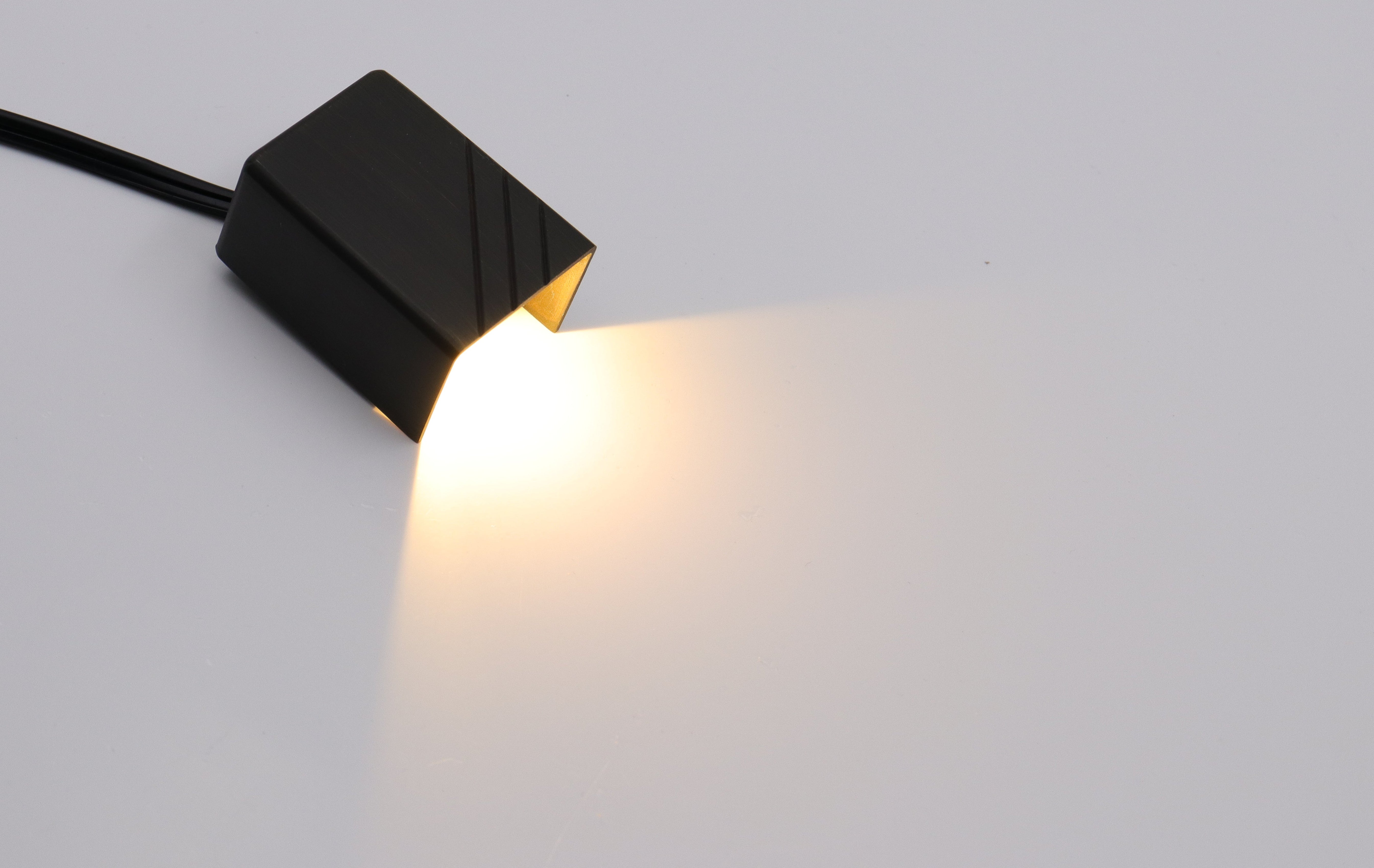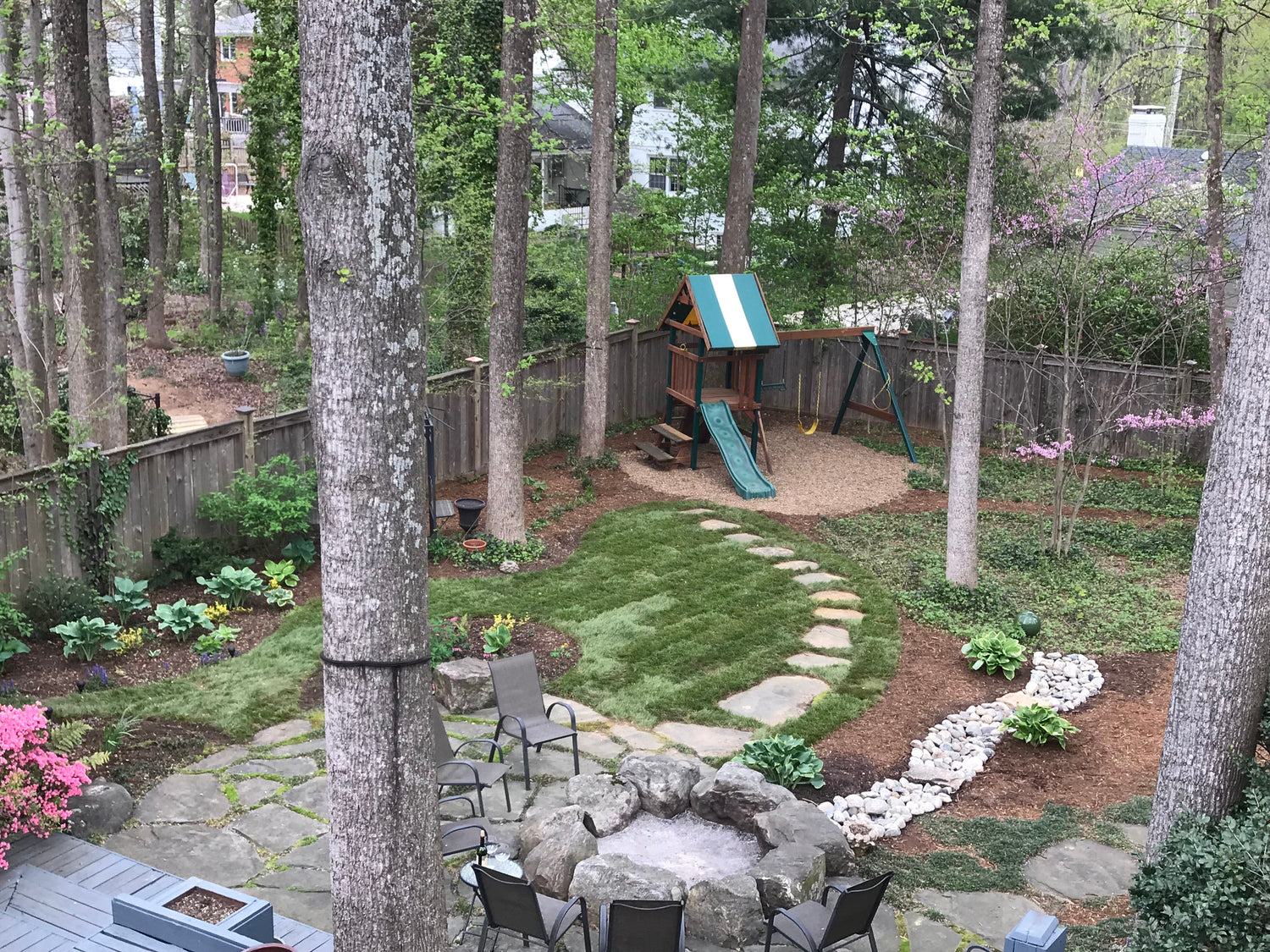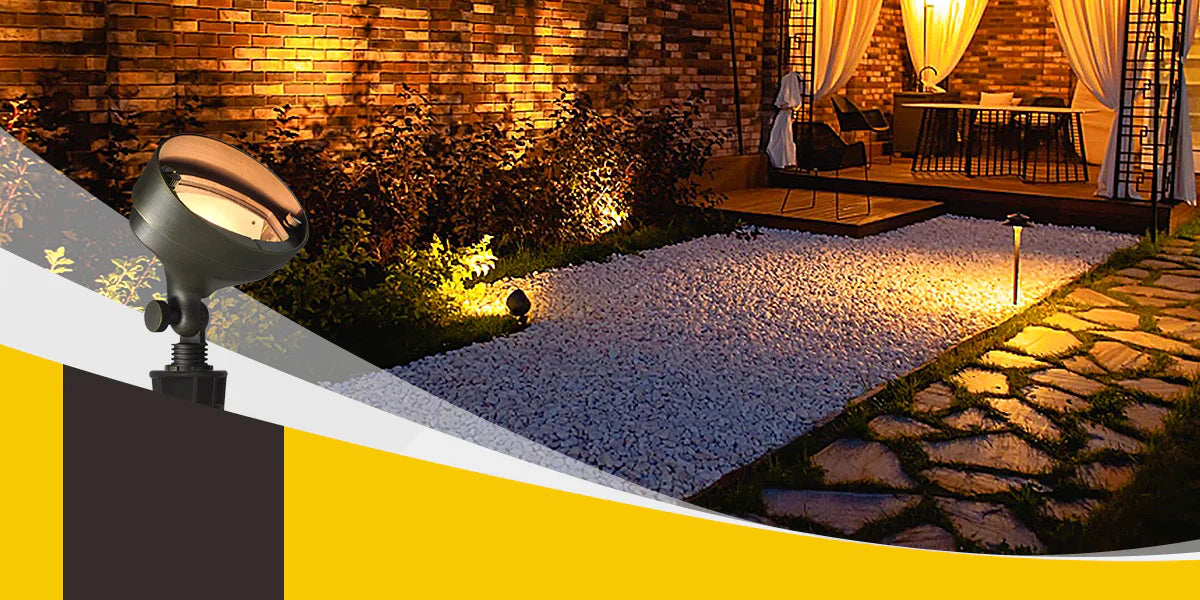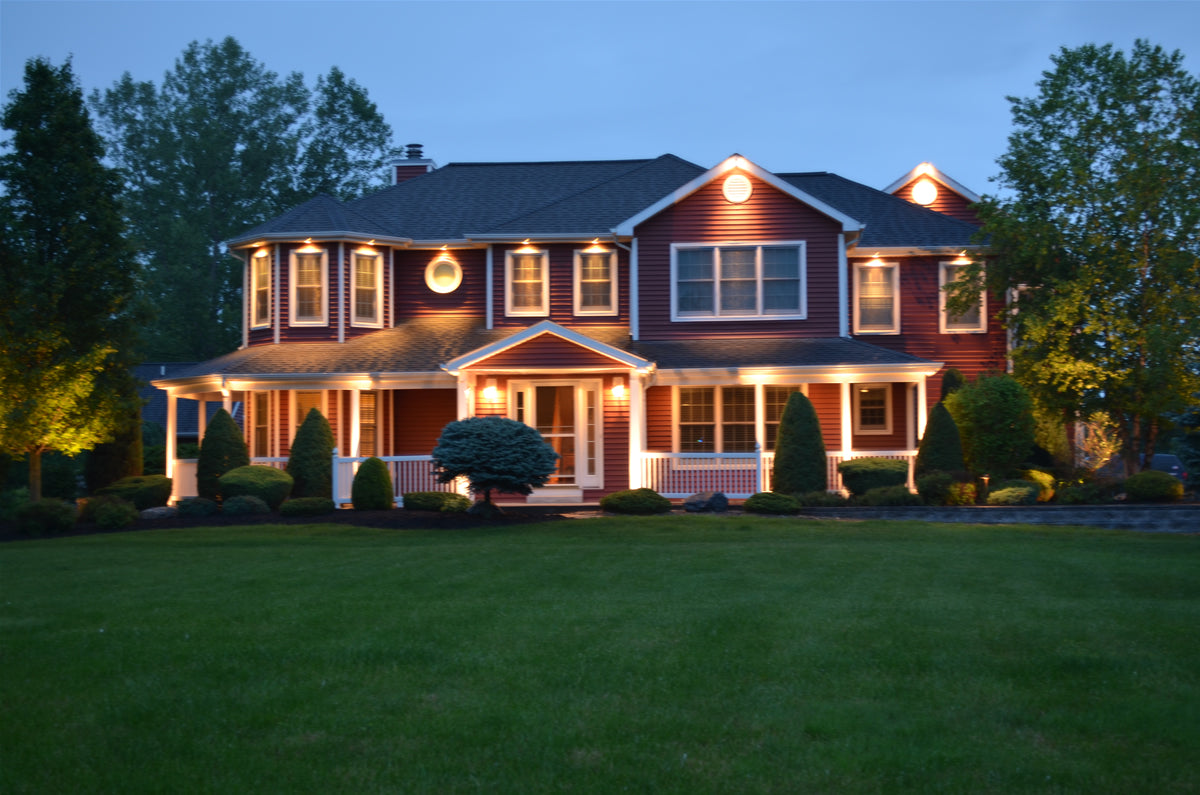Ever thought about how the lights outside your window are as eco-friendly as they are bright?We're seeing a shift where powerful Modern flood lights do more than just illuminate our driveways and sidewalks. They're getting an environmental upgrade, with smart designs that cut down on light pollution, sensors that flip on only when needed, and LED bulbs that go easy on power while lasting ages. It's all about lighting up our night-time spaces thoughtfully, ensuring we keep critters safe and our starry nights clear. So, come along as we explore how these high-tech beams are making a real difference, both in our backyards and for the planet.
What Makes Flood Lights Leaders in Sustainable Lighting?
Darkness-Designed Fixtures
Modern flood lights are leading the charge in eco-friendly design by prioritizing features that target and limit light pollution. Central to this approach is the adoption of full cutoff fixtures, which are specifically designed to prevent light from spilling above a 90-degree angle relative to the ground. This focused directionality ensures that illumination is cast precisely where it's required, mitigating the effects of glare and skyglow, thus protecting the nocturnal landscape.
Motion Sensors and Adaptive Controls
The integration of motion sensors represents a smart evolution in flood lighting. These sensors allow lights to activate only when movement is detected, significantly reducing unnecessary light output and energy usage. Such adaptive controls exemplify how technology can be harnessed to create an intelligent lighting system that responds dynamically to its environment, ensuring light is used efficiently and sparingly.
Smart Lighting: Sensors & Controls
Adjustability is another hallmark of contemporary flood lighting. Dimming technologies empower users to tailor lighting levels to the specific needs of an area at any given time. This not only curbs the common issue of over-illumination but also contributes to energy conservation and extends the lifespan of lighting fixtures.
Energy-Efficient Bulbs
As part of the sustainable illumination trend, energy-efficient bulbs such as LEDs have become a standard in eco-friendly flood lights. These bulbs consume a fraction of the energy compared to their traditional counterparts and have a much longer lifespan, reducing both operational costs and environmental impact.

How Do Flood Lights Serve Multiple Purposes?
Security Flood Lights
When it comes to keeping places secure, flood lights are like silent sentinels. They're the unsung heroes that illuminate dark corners where potential trouble could lurk. In a residential alleyway or around the vast expanse of a warehouse, these beams of light stand on guard, ensuring peace of mind as they deter unwanted visitors and make sure every nook is visible to security cameras.
Architectural Flood Lighting
Flood lights aren't just about safety; they're also stars in the world of design. As dusk falls, they come alive, casting their glow to show off buildings at their best. Whether it's making the features of your home twinkle or throwing dramatic shadows across an iconic structure, these lights turn the ordinary into something extraordinary once the sun dips below the horizon.
Residential Flood Lighting
At home, flood lights wear many hats. That same beam that guides you up the driveway can create the perfect mood for a backyard barbecue. These versatile fixtures let you switch from bright and functional for an evening DIY project to soft and subtle for a relaxing night under the stars, all with the flick of a switch or a tap on your smartphone.
Commercial Flood Lighting
For businesses, good lighting is like a warm welcome. It's there to ensure the company sign is sparkling for passersby or that customers can find their way safely across the parking lot. Public spaces, too, get a boost from flood lights—think sports arenas lit up for a nighttime match or parks where evening strolls are made safe and serene, thanks to these powerful beams.
Eco-Conscious Flood Lighting
Even out in nature, smart flood lighting proves its worth. Designed to be sensitive to the environment, these lights guide us along park trails and boardwalks without causing a stir among wildlife or contributing to light pollution. They're proof that our need for light can harmoniously coexist with the natural world, highlighting pathways for us while still letting the stars shine bright above.
Where Should You Place Flood Lights for Optimal Performance?
Precision Flood Light Positioning
Getting flood lights to hit just the right spot is an art. The goal is to cast light effectively without letting it stray where it's not needed. This means angling each flood light so that it illuminates the target area fully, but doesn't let light leak into the sky or neighboring windows. It's all about precision—tilting the lights downward and ensuring they're equipped with shielding to focus the beam.
Optimal Flood Light Height
Raising your flood lights to the appropriate height can dramatically increase their effectiveness and minimize unwanted spillage. By mounting fixtures high up, you allow the light to disperse over a wider area, giving you more bang for your buck illumination-wise. However, it’s important to balance height with angle to avoid creating intrusive glare.
Synergy in Flood Lighting
For larger areas, using a series of strategically placed flood lights can be more efficient than relying on a single source. This network of lights should work as a team, with each one positioned to overlap slightly with its neighbor’s pool of light. This ensures even distribution and eliminates dark spots without resorting to excessive brightness.

Illustrating Effective Flood Light Placement
Diagrams and visuals are invaluable when it comes to understanding the nuances of placement. Imagine illustrations showing the top-down view of a property, with cones of light demonstrating how to position each flood light for optimal coverage. Side views could help to explain the best angles for minimizing skyglow. These kinds of visuals can make the complex task of placement much clearer, providing a visual checklist that ensures you’re hitting the mark.
How to Choose the Best Eco-Friendly Flood Lights?
The Lumen-to-Watt Ratio
When setting out to find your eco-friendly lighting champion, start by examining the efficiency of the flood light. Look for options that offer the highest lumen-to-watt ratio. This lumen-to-watt ratio will tell you how much light you get for each unit of power. LED flood lights often lead the pack in efficiency, providing bright illumination with much lower power consumption compared to traditional bulbs.
Durability and Longevity
An environmentally friendly flood light isn't just about immediate efficiency; it's also about longevity. Durable lights that can withstand the elements without frequent replacements reduce waste and save resources in the long run. Seek out fixtures rated for a long lifespan and check warranties and reviews for assurance of their endurance.
Smart Features
Flood lights with smart features such as motion sensors, timers, and dimmable settings give you control over when and how you use your light. These features not only add convenience but also ensure that the lights are on only when needed, conserving energy and reducing light pollution.
Certifications and Standards
Look for certifications that indicate a product meets strict environmental standards. Energy Star, for example, is a label given to products that are recognized as highly energy-efficient. Such certifications are a quick guide to finding products that are verified to be more eco-friendly.
Considering Color Temperature
Color temperature plays a subtle yet important role in eco-friendly lighting. Opt for warmer temperatures (measured in Kelvin) where possible, as cooler, bluer light is more likely to contribute to skyglow and can disrupt wildlife patterns. Color temperature considerations also show that warmer lights often blend better with the environment and are less intrusive.
Planning for the Product's End of Life
Finally, consider the recyclability of the flood light. An environmentally friendly choice should have components that are easy to dismantle and recycle at the end of the product's life cycle. Less waste means a smaller environmental footprint.
What Are the Best Practices for Using Flood Lights Responsibly?
Fine-Tuning the Glow
For homeowners and businesses keen on using flood lights responsibly, it all begins with getting the angle just right. It's essential to aim your flood lights in such a way that they brighten up the intended space without encroaching on your neighbor’s privacy or the night sky. Adjusting the fixtures so that they point downward reduces light pollution and glare.
Choosing the Right Hue
The color of the light matters more than you might think. By selecting bulbs with warm colors—those mimicking the hues of early dawn or dusk—you contribute to a cozy atmosphere while being kind to nocturnal ecosystems. These warmer tones are less disruptive to wildlife and are less likely to contribute to skyglow compared to their cooler blue counterparts.
Smart Lighting
Smart lighting technologies offer an effective way to use flood lights only when necessary. Motion sensors can keep areas secure by activating lights as needed, while timers ensure lights aren't left on inadvertently, conserving energy. Dimmers give you the flexibility to reduce brightness when full power isn’t required, further saving energy.
Safety vs. Starlight
Security is paramount, but it needn't come at the cost of our starry nights. By using shielded bulbs and directing beams properly, one can maintain secure surroundings without contributing to light pollution. Consider using lower-intensity lighting where possible and brighter lights only in areas where greater visibility is crucial.
Community Consciousness
Being mindful of how your flood lights impact your neighborhood is part of responsible usage. If each household and business adopts considerate lighting practices, it can collectively lead to a significant reduction in light pollution. This community effort pays off not just in clearer skies but also in a generally more pleasant nighttime environment for all.
Light Up Your World Responsibly
So, here's the scoop on flood lights—they're not just big, bright bulbs anymore. They've gotten a serious upgrade. We're talking lights that are energy-saving, gentle on the earth, and even work with your phone. It's all about making our homes and streets shine without stepping on Mother Nature's toes. As we keep rolling with these upgrades, we light up the night in smarter ways. That means we can all enjoy a bright, safe space outside and still kick back under the stars at the end of the day. Let's keep it up, because when we choose the right lights, we make the night better for everyone.






Leave a comment
All comments are moderated before being published.
This site is protected by hCaptcha and the hCaptcha Privacy Policy and Terms of Service apply.